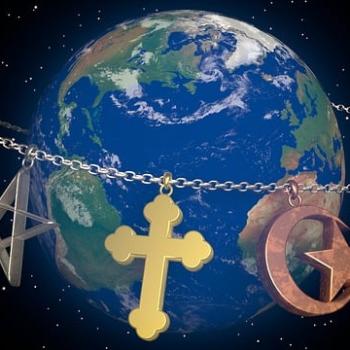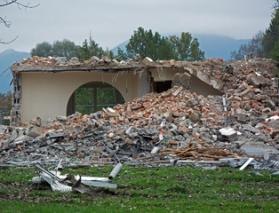The world of Aronofsky’s Noah is a thoroughly Gnostic one: a graded universe of “higher” and “lower.” The “spiritual” is good, and way, way, way “up there” where the ineffable, unspeaking god dwells, and the “material” is bad, and way, way down here where our spirits are encased in material flesh. This is not only true of the fallen sons and daughters of Adam and Eve, but of fallen angels, who are explicitly depicted as being spirits trapped inside a material “body” of cooled molten lava.
Admittedly, they make pretty nifty movie characters, but they’re also notorious in Gnostic speculation. Gnostics call them Archons, lesser divine beings or angels who aid “The Creator” in forming the visible universe. And Kabbalah has a pantheon of angelic beings of its own all up and down the ladder of “divine being.” And fallen angels are never totally fallen in this brand of mysticism. To quote the Zohar again, a central Kabbalah text: “All things of which this world consists, the spirit as well as the body, will return to the principle and the root from which they came.” Funny. That’s exactly what happens to Aronofsky’s Lava Monsters. They redeem themselves, shed their outer material skin, and fly back to the heavens. Incidentally, I noticed that in the film, as the family is traveling through a desolate wasteland, Shem asks his father: “Is this a Zohar mine?” Yep. That’s the name of Kabbalah’s sacred text.
The entire movie is, figuratively, a “Zohar” mine.
If there was any doubt about these “Watchers,” Aronofsky gives several of them names: Semyaza, Magog, and Rameel. They’re all well-known demons in the Jewish mystical tradition, not only in Kabbalah but also in the book of 1 Enoch.
What!? Demons are redeemed? Adolphe Franck explains the cosmology of Kabbalah: “Nothing is absolutely bad; nothing is accursed forever—not even the archangel of evil or the venomous beast, as he is sometimes called. There will come a time when he will recover his name and his angelic nature.”
Okay. That’s weird. But, hey, everybody in the film seems to worship “The Creator,” right? Surely it’s got that in its favor!
Except that when Gnostics speak about “The Creator” they are not talking about God. Oh, here in an affluent world living off the fruits of Christendom the term “Creator” generally denotes the true and living God. But here’s a little “Gnosticism 101” for you: the Creator of the material world is an ignorant, arrogant, jealous, exclusive, violent, low-level, bastard son of a low level deity. He’s responsible for creating the “unspiritual” world of flesh and matter, and he himself is so ignorant of the spiritual world he fancies himself the “only God” and demands absolute obedience. They generally call him “Yahweh.” Or other names, too (Ialdabaoth, for example).
This Creator tries to keep Adam and Eve from the true knowledge of the divine and, when they disobey, flies into a rage and boots them from the garden.
In other words, in case you’re losing the plot here: The serpent was right all along. This “god,” “The Creator,” whom they are worshiping is withholding something from them that the serpent will provide: divinity itself.
The world of Gnostic mysticism is bewildering with a myriad of varieties. But, generally speaking, they hold in common that the serpent is “Sophia,” “Mother,” or “Wisdom.” The serpent represents the true divine, and the claims of “The Creator” are false.
[Keep reading. . . .]












